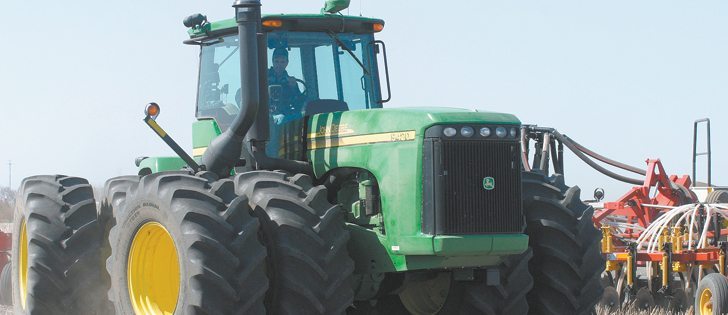July weather key | Yield expectations will drop if seeding goes into late May and early June
Markets have no reason to be jittery about the late-seeded U.S. corn crop, say a pair of academics who have studied the issue.
“History would say late planted crops generally turn out OK,” said Darrel Good, an agricultural economist at the University of Illinois.
As of May 5, American farmers had seeded 12 percent of their corn crop, a little less than what analysts had expected.
Last year at the same time they had seeded 69 percent and the five year average is 47 percent.
An average of 15 percent of the U.S. corn crop has been planted late in the 42 years from 1971 to 2012. Late is considered anything after May 20.
Read Also

U.S. market can’t easily be replaced
The deputy chief economist of Farm Credit Canada says 92 per cent of Canada’s total exports to the U.S. went into the country duty-free in June.
This year it appears as though half the crop could go in the ground after that date.
“That would be the largest percentage late planted that we would have experienced,” said Good.
Research shows yield potential declines by about one percent per day for corn seeded in late May due to the shorter growing season, increased insect and disease pressure and higher risk of hot and dry conditions during the critical pollination phase.
Good said it is crucial to keep in mind the research is about “yield potential,” which will be determined by a number of summer weather factors, and not “trend line yields.”
It is usually precipitation that causes the delay, which means crops that are seeded late are generally planted into moist soil, which increases yield potential.
Good said the results are a bit random, but more late-seeded U.S. corn crops tend to exceed trend line yields than those that fall short of expectations.
It all depends on what happens in July. If that critical month is cooler and wetter than normal, growers could still be in store for a fantastic corn crop despite the frustratingly slow start to 2013 planting.
Bob Nielsen, extension agronomist at Purdue University, doesn’t put faith in basing yields on when the crop is planted.
“That’s really a poor predictor of anything — good yields, bad yields, in between. It really depends on what happens the entire year,” he said.
Indiana’s corn crop was exceptionally late two years ago, and yields were nine percent below trend. It was equally late four years ago and yields were nine percent above the trend.
“Those two years simply just reinforce the fact that nothing is a predictor of the absolute yield in a particular year,” said Nielsen.
Of course, there is a point at which yields will be severely diminished by late seeding.
Crop insurance benefits start to decline precipitously after about June 5 for most regions of the U.S. Midwest.
“My expectation at this juncture is we (have) probably lost maybe about one percent of our yield potential. That could accelerate over the next couple of weeks,” said Good. “If we do push planting into late May-early June, any yield expectations will erode much more sharply.”
After June 5, growers in the Midwest will consider switching acres to an alternative crop such as soybeans. That may already be happening in more northerly states such as the Dakotas and Minnesota.
“We could lose a couple million acres, I would think, fairly easily,” said Good.
A reduction of that magnitude for a crop that is expected to be planted on 97 million acres this spring will have a minimal impact on prices if growers have reasonable yields, which is what Good is still forecasting.
“Prices probably would not go as low as they would have otherwise, but I don’t think it would be necessarily very supportive of prices above where we are now,” he said.
Nielsen has analyzed final planting numbers versus March intentions in Indiana in really late planting years.
The difference was rarely more than 200,000 acres for a state that grows five to six million acres of corn every year.
“What that tells us is that more often than not we do end up getting the crop planted in a timeframe that suits most of these guys,” he said.
















